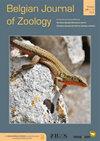比利时一个废弃采砂场内收割者(Opiliones)社区的继承
IF 1.1
4区 生物学
Q2 ZOOLOGY
引用次数: 6
摘要
对这些出土地区的修复方法经常有争议:是自然演替还是主动修复。我们研究了自然演替如何塑造收割机群落,作为土壤居住群落的一部分。我们在比利时一个废弃采石场的25个地块上使用陷阱对采石场采石者进行了连续14个月的采样。我们发现,在采石场的各个部分被遗弃后,采石场的采石场活动密度、物种丰富度和多样性随着时间的推移而显著增加。大约15年后,观察到物种组成发生了巨大变化,建立了更强烈依赖潮湿条件来完成其生命周期的森林物种。尽管收割机的移动性有限,但它们的殖民化与植被演替密切相关。我们认为,自然演替可能是恢复采石场废弃采石场中收获动物群落以及其他土栖无脊椎动物群落的良好管理工具。本文章由计算机程序翻译,如有差异,请以英文原文为准。
Succession in harvestman (Opiliones) communities within an abandoned sand quarry in Belgium
Sand mining strongly alters the existing landscape, transforming an area into a mosaic of native (sand deposits) and foreign soils, strongly influencing biotic development. The method of restoration of such excavated areas is often debated: natural succession or active restoration. We investigated how natural succession shapes harvestman communities, as part of the soil-dwelling community. We sampled harvestmen over a continuous period of 14 months in 25 plots in an abandoned sand quarry in Belgium using pitfall traps. We found significant increases in harvestman activity-density, species richness and diversity with time since abandonment of the various sections of the quarry. After about 15 years, a drastic change in species composition was observed with the establishment of forest species that more strongly depend on humid conditions to complete their life cycle. Colonisation of harvestmen closely followed vegetation succession despite their limited mobility. We argue that natural succession could be a good management tool for restoring harvestman communities as well as those of other soil-dwelling invertebrates in abandoned sand quarries.
求助全文
通过发布文献求助,成功后即可免费获取论文全文。
去求助
来源期刊

Belgian Journal of Zoology
生物-动物学
CiteScore
1.90
自引率
0.00%
发文量
10
审稿时长
>12 weeks
期刊介绍:
The Belgian Journal of Zoology is an open access journal publishing high-quality research papers in English that are original, of broad interest and hypothesis-driven. Manuscripts on all aspects of zoology are considered, including anatomy, behaviour, developmental biology, ecology, evolution, genetics, genomics and physiology. Manuscripts on veterinary topics are outside of the journal’s scope. The Belgian Journal of Zoology also welcomes reviews, especially from complex or poorly understood research fields in zoology. The Belgian Journal of Zoology does no longer publish purely taxonomic papers. Surveys and reports on novel or invasive animal species for Belgium are considered only if sufficient new biological or biogeographic information is included.
 求助内容:
求助内容: 应助结果提醒方式:
应助结果提醒方式:


